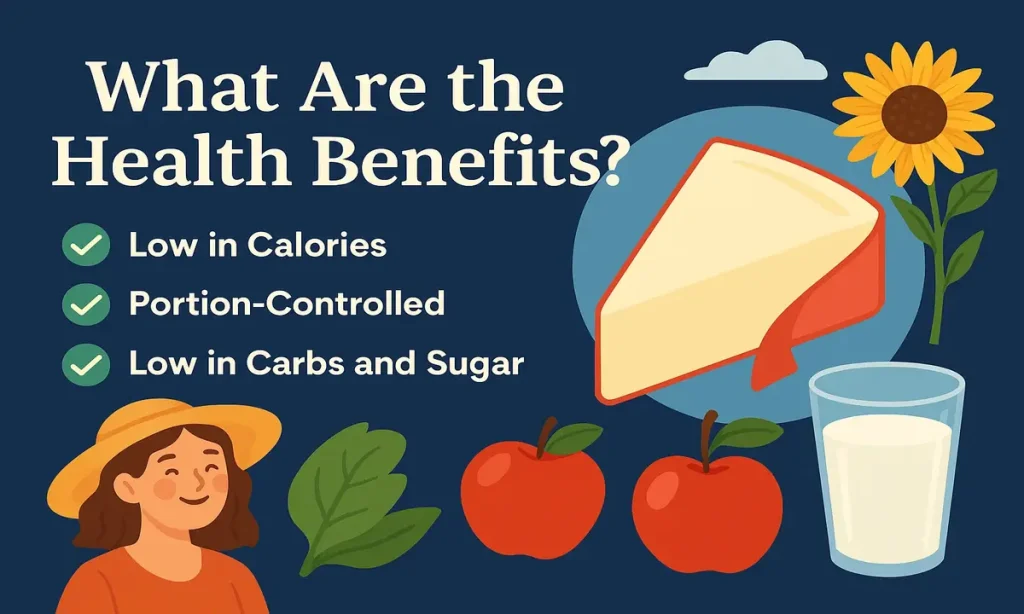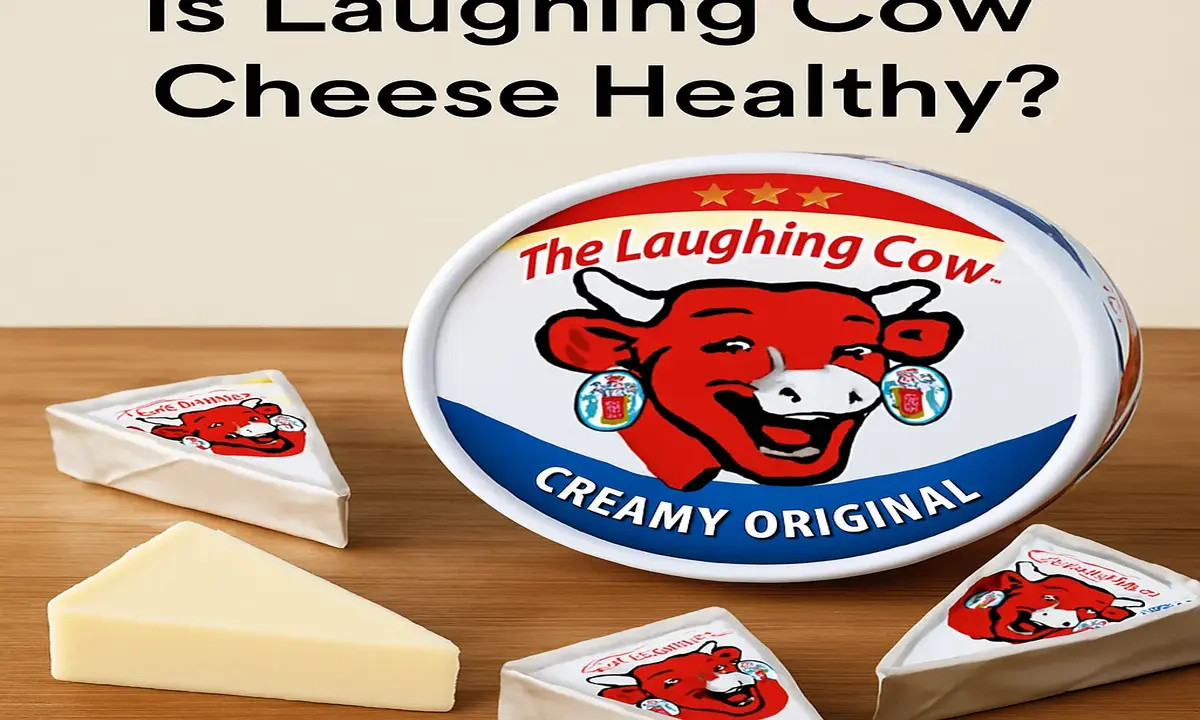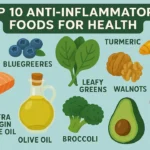Laughing Cow cheese is a favorite snack for many people around the world. It’s creamy, mild, and comes in a fun triangle shape. It’s perfect for spreading on crackers or enjoying on its own.
But here’s the real question: Is Laughing Cow cheese healthy?
In this article, we’ll take a deep look at what’s inside this popular cheese. We’ll talk about its ingredients, nutrition facts, benefits, and any health risks. We’ll also compare it to other cheeses and find out if it fits into certain diets like keto or low-fat plans.
By the end, you’ll know whether it deserves a spot in your fridge.
What Is Laughing Cow Cheese?
Laughing Cow cheese is a creamy, spreadable cheese product. It’s made by blending different cheeses and milk ingredients. It’s not the same as traditional hard cheese like cheddar or gouda.
The brand was created in France in 1921. It’s known for its smiling cow logo and circular box filled with red foil triangles. You’ve probably seen it in grocery stores near cream cheese or snack cheese.
Over the years, it has gained fans all over the world. People love how easy it is to carry, open, and eat. No knife or refrigeration is needed—at least not right away.
There are many flavors now, too, like original, garlic and herb, light, and spicy pepper.
Also Read: How Webfreen.com Enhances Your Green Spaces
What’s Really Inside Laughing Cow Cheese?
Let’s break it down.
Here are the common ingredients found in a typical wedge:
- Cheese (usually cheddar or Swiss)
- Milk and cream
- Whey (a milk protein)
- Salt
- Emulsifying salts (for smooth texture)
- Citric acid
- Sometimes preservatives
It doesn’t contain artificial colors or flavors, which is a plus. But it’s still considered a processed cheese. That means it’s made by melting and blending different cheeses with extra ingredients to make it smooth, shelf-stable, and spreadable.
It’s not a natural cheese like brie, mozzarella, or parmesan. But that doesn’t mean it’s “bad” by default. It just means it’s made differently.
Laughing Cow Nutrition Facts
Each wedge of Laughing Cow cheese is about 21 grams. That’s a little smaller than your average cheese slice.
Here’s what you’ll usually get in one wedge:
- Calories: 50 to 60
- Fat: 4 to 5 grams
- Saturated Fat: 2 to 3 grams
- Protein: 2 grams
- Carbohydrates: Less than 1 gram
- Sugar: 0 grams
- Sodium: Around 180 to 200 milligrams
- Calcium: Around 10% of your daily needs
It’s fairly low in calories, fat, and carbs. That’s great for people who are trying to eat lighter.
But be careful with the sodium. If you eat several wedges in one sitting, that salt adds up quickly.
What Are the Health Benefits?

Laughing Cow cheese has a few things going for it. While it may not be a “superfood,” it does offer some nice benefits when eaten in moderation.
1. Low in Calories
Each wedge is small and light. You can enjoy cheese without feeling like you’re overindulging. It’s a great snack option for calorie counters.
2. Portion Control Made Easy
The cheese comes in individual wedges. That means no guesswork. You know exactly how much you’re eating every time. It helps to avoid overeating.
3. Good Source of Calcium
One wedge has about 10% of your daily calcium requirement. That’s good for bones, teeth, and muscle health.
4. Soft and Easy to Digest
Because it’s creamy and soft, it’s easy on the stomach. It’s a nice choice for people who can’t handle harder or richer cheeses.
5. Low in Sugar and Carbs
If you’re cutting carbs or sugar, this cheese fits the plan. Many people on keto or low-sugar diets use it as a go-to snack.
6. Kid-Friendly Snack
It’s mild in flavor and easy to chew. Kids often love it. Plus, the fun shape and packaging make snack time exciting.
Read More: SimplySeven.net: Your Ultimate Guide to a Healthier Lifestyle
What Are the Downsides?
Even healthy-sounding snacks can have downsides. Let’s look at a few things to watch for.
1. It’s a Processed Cheese
This isn’t a farm-fresh block of cheddar. It’s made in a factory with added ingredients to help it melt and spread better. If you prefer natural foods, this may be a downside.
2. High in Sodium
Each wedge has up to 200 milligrams of sodium. That’s about 8% of your daily limit. If you’re watching your salt intake, be mindful of how many wedges you eat.
3. Not Much Protein
At only 2 grams of protein per wedge, it won’t keep you full for long. You may need to pair it with protein-rich foods to stay satisfied.
4. Contains Emulsifiers and Additives
These are safe to eat but not something you’d use at home. Some people prefer foods without these extra ingredients.
Comparing Laughing Cow to Other Cheeses
Wondering how it stacks up next to your usual cheese? Here’s a quick look:
| Cheese | Calories | Fat | Protein | Sodium |
|---|---|---|---|---|
| Laughing Cow | ~50–60 | 4–5g | 2g | ~200mg |
| Cheddar (hard) | ~115 | 9g | 7g | ~180mg |
| Cream Cheese | ~70 | 7g | 1g | ~90mg |
| Goat Cheese | ~75 | 6g | 4g | ~130mg |
| Cottage Cheese | ~40–50 | 1g | 4g | ~200mg |
As you can see, Laughing Cow is lower in calories and fat than many others. But it’s also lower in protein.
Is Laughing Cow Cheese Good for Diets?
It can be!
Here’s how it fits into different eating plans:
Low-Calorie Diets:
Yes! It’s a light, portion-controlled snack.
Keto or Low-Carb Diets:
Yes, it is very low in carbs.
Low-Sodium Diets:
Maybe not. It’s a bit salty, so watch your intake.
Vegetarian Diets:
Yes, in most cases. Just check the label to be sure it doesn’t contain animal rennet.
High-Protein Diets:
Not really. You’ll need to pair it with other protein sources.
Creative Ways to Enjoy Laughing Cow Cheese
Don’t just eat it straight from the wrapper—though you totally can!
Here are a few tasty ideas:
- Spread it on whole grain crackers
- Dip baby carrots or celery sticks
- Mix into scrambled eggs
- Use as a creamy sandwich spread
- Add to a wrap for extra flavor
- Stir into hot pasta for a cheesy finish
- Pair with apple slices for a sweet-and-savory snack
It’s super versatile. Get creative!
What Are People Saying?
Most people love the convenience and creamy taste.
Fans say it’s a guilt-free way to enjoy cheese. It’s great for lunchboxes, quick snacks, and low-carb meal plans.
Some critics think it’s too mild or overly processed. But even they admit it’s useful for certain recipes or quick bites.
Online reviews are mostly positive. Especially from people trying to eat healthier without giving up cheese.
Should You Add It to Your Grocery List?
If you like cheese and want a light snack, it’s worth a try.
It’s not a meal replacement, but it’s a good addition to a healthy eating plan. Just don’t rely on it as your only source of dairy or protein.
Pair it with other whole foods to make it part of a balanced diet.
Final Thoughts
So, is Laughing Cow cheese healthy?
Yes—in moderation. It’s a convenient, low-calorie snack with some nutritional benefits. It offers calcium, a bit of protein, and a creamy texture people love.
But it’s also processed and high in sodium. If you’re eating clean or limiting salt, enjoy it occasionally—not every day.
Like most things, it all comes down to balance. If you love it, eat it—just don’t overdo it.
FAQs
Is Laughing Cow cheese good for kids?
Yes, it’s soft and easy to eat. Kids enjoy the flavor and packaging. Just watch portions if you’re worried about salt.
Can I eat it every day?
It’s okay to eat regularly, but mix it up with other cheeses or dairy sources for variety.
Does it contain lactose?
Yes, it has some. People with mild lactose sensitivity might tolerate it. But if you’re fully lactose-intolerant, try with caution.
Is it vegetarian-friendly?
Usually, yes. It often uses non-animal rennet. But check the label to be sure.
Is it safe during pregnancy?
Yes, as long as it’s pasteurized. Most versions are. Still, it’s always smart to double-check the label or ask your doctor.












